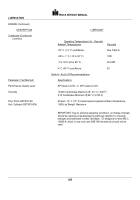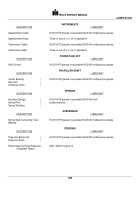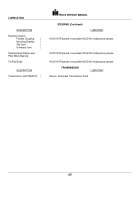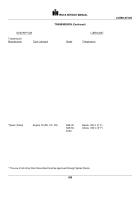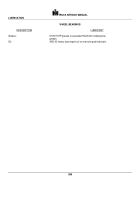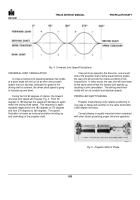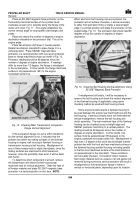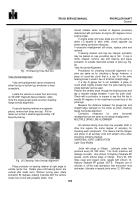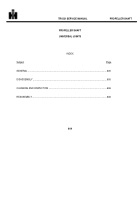TM-5-3805-254-14-P-2 - Page 602 of 894
TRUCK SERVICE MANUAL
PROPELLER SHAFT
General
The most common causes of vibration are:
1.
universal joint flange or yoke misalignment; 2. parking
brake drum out of balance; 3.
Out of-balance propeller
shaft assembly; 4.
propeller shaft out of phase; 5.
excessive flange run-out or distorted yokes; 6.
loose flange
or yoke rut; 7.
excessive vehicle speed.
To correct drive line vibration the propeller shaft must
be checked in such a manner that both balance and
alignment are considered.
Never change the drive line
balance or alignment until a thorough check of the most
common causes has been completed.
Drive line vibration can be checked by road testing the
vehicle, spinning the drive line with the vehicle up on floor
stands, or by pulling the rear axle shafts and spinning the
drive line.
CAUTION
: Be certain that vehicle is positively
supported.
Start the engine and with the clutch disengaged and
the transmission in gear to keep the clutch disc from
spinning, bring engine speed up slowly to governed speed
to determine if vibration is in the engine itself or due to an
out-of-balanced clutch pressure plate assembly.
If only
normal vibration is evident, disconnect the front propeller
shaft at the transmission companion flange and with the
transmission in direct drive and the clutch engaged, slowly
bring engine speed to governed speed to determine if
vibration is caused by an out-of-balance clutch disc or out-
of-balance transmission gears.
If both the above checks show only normal vibration,
connect the front propeller shaft and use the following step-
by-step procedure in balancing the drive line assembly.
BALANCING THE DRIVE LINE
There are three methods of balancing the drive line and
these are:
1.
By rotating the propeller shaft 180° in relation to the
companion flange.
2.
By adding a small weight to the parking brake drum.
3.
By adding a small weight to the propeller shaft.
Each of these methods is covered in detail in the following
paragraphs.
Before any balance weights are added to the brake drum or
propeller shafts, disconnect the rear propeller shaft at the
center bearing and rotate the shaft 180' in relation to the
companion
flange (vehicles without center bearing, rotate the shaft at
the transmission).
Reconnect the shaft, then road test the
vehicle or spin the drive line and check for vibration.
Back to Top

